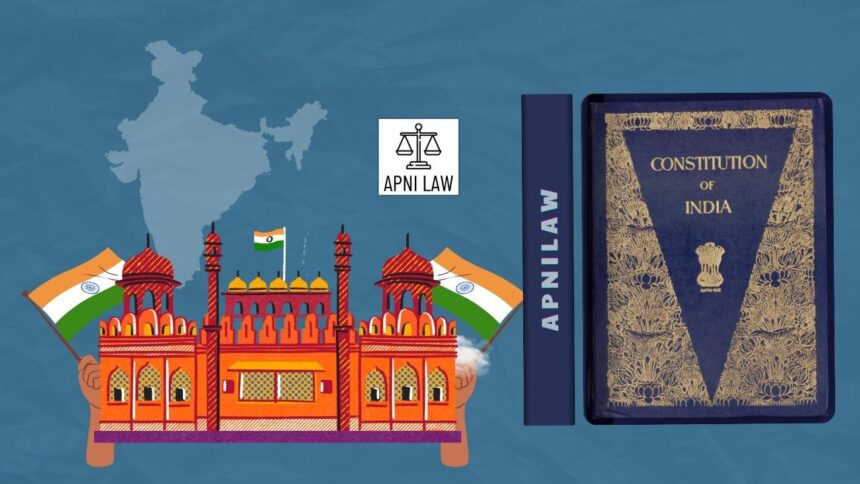Introduction
Political parties form the foundation of India’s democracy. They represent diverse ideologies, regional aspirations, and social interests, allowing citizens to choose leaders and policies through elections. The Indian political system thrives on a multi-party structure, meaning several national and regional parties contest elections at every level. To ensure fairness and uniformity, the Election Commission of India (ECI) regulates political parties through a well-defined framework involving recognition rules and election symbols. These rules ensure that parties function transparently, maintain internal democracy, and give voters a clear choice during elections.
Evolution of Political Parties in India
The evolution of political parties in India is deeply rooted in its struggle for independence. The Indian National Congress, founded in 1885, was the first major political organization to channel people’s aspirations toward self-governance. After independence in 1947, the Congress became dominant at both the national and state levels. However, the emergence of other parties such as the Bharatiya Jana Sangh (later BJP), the Communist Party of India (CPI), and various regional outfits transformed India into a vibrant multi-party democracy.
Today, India has more than 2,500 registered political parties, though only a few have significant influence. To distinguish between serious political contenders and smaller or inactive groups, the Election Commission has laid down recognition rules that determine whether a party qualifies as a national or state party.
Registration of Political Parties
Under Section 29A of the Representation of the People Act, 1951, any association or group of Indian citizens can register as a political party with the Election Commission of India. The party must submit its constitution, details of its leadership, financial structure, and objectives that align with the Constitution of India. Registration provides the party with legal status, eligibility for certain benefits, and the right to contest elections under a specific name and symbol.
However, registration alone does not automatically grant the party recognition as a national or state party. Recognition is based on performance in elections and adherence to the rules framed by the Election Commission.
Recognition of Political Parties: National and State Parties
The Election Symbols (Reservation and Allotment) Order, 1968 governs the recognition of political parties in India. Recognition depends on the party’s electoral performance, including the number of votes secured and seats won in Lok Sabha or State Assembly elections.
A national party must meet any one of the following conditions: it wins at least 2% of the total seats in the Lok Sabha from at least three different states; it is recognized as a state party in four or more states; or it secures at least 6% of valid votes in four or more states and wins four Lok Sabha seats from any of them.
A state party, on the other hand, must meet any one of the following criteria: it secures 6% of the valid votes in the state assembly election and wins at least two seats; it secures 6% of the valid votes in Lok Sabha elections from that state and wins at least one seat; it wins 3% of the total assembly seats or three seats, whichever is higher; or it wins one Lok Sabha seat for every 25 Lok Sabha seats allotted to that state.
Recognition provides several benefits, including reserved election symbols, free broadcast time on public media during elections, and access to electoral rolls.
Election Symbols: Meaning and Significance
Election symbols are vital in a country like India, where a large section of the population is illiterate or semi-literate. Symbols help voters easily identify political parties and candidates on the ballot paper or Electronic Voting Machine (EVM).
The Election Commission of India allots symbols to recognized political parties from a pre-approved list. National and state parties have reserved symbols, while registered unrecognized parties or independent candidates are allotted free symbols from the list before each election.
For example, the BJP’s lotus, the Congress’s hand, and the Bahujan Samaj Party’s elephant are permanent reserved symbols, instantly recognizable to millions of voters. Symbols become a party’s identity, reflecting its ideology and continuity over time.
Derecognition and Loss of Symbol
Recognition is not permanent. If a party fails to meet the required electoral criteria in subsequent elections, it loses its recognized status. This process ensures accountability and prevents inactive or underperforming parties from holding privileges they no longer deserve. When a party loses recognition, its reserved symbol becomes available for allotment to other parties or independent candidates.
Role of the Election Commission
The Election Commission of India plays a central role in maintaining transparency and discipline among political parties. It registers parties, evaluates their performance, allots symbols, and monitors their conduct under the Model Code of Conduct. The ECI can also take disciplinary actions such as suspension or derecognition if a party violates constitutional principles or engages in unlawful activities.
The Commission also ensures internal democracy within parties by urging them to hold regular elections, maintain financial transparency, and promote inclusiveness in candidate selection.
Importance of Recognition Rules and Symbols
Recognition rules and symbols uphold the democratic spirit of Indian elections. They prevent confusion among voters, maintain the credibility of political parties, and ensure a fair playing field for all contenders. Recognized parties also gain legitimacy in the eyes of the electorate, which strengthens political stability.
Symbols, meanwhile, serve as powerful tools of communication. They represent ideas, emotions, and trust that transcend language and literacy barriers. In a country as diverse as India, symbols help unify voters under shared identities and political visions.
FAQs on Political Parties in India
- What is the difference between a national party and a state party?
A national party operates across several states and must meet the Election Commission’s national recognition criteria. A state party, however, is recognized within a single state based on its electoral performance in that region. - Who allots election symbols to political parties?
The Election Commission of India allots symbols under the Election Symbols (Reservation and Allotment) Order, 1968. Recognized parties get reserved symbols, while unrecognized ones receive free symbols before each election. - Can a political party lose its recognition?
Yes. If a political party fails to meet the minimum vote or seat requirements in subsequent elections, the Election Commission can revoke its recognition and withdraw its reserved symbol.
Conclusion
Political parties are the lifeline of India’s democratic structure, translating people’s aspirations into policies and governance. The recognition rules and symbol allocation process managed by the Election Commission ensure transparency, fairness, and accountability in the electoral system. Articles and laws governing political parties strike a balance between democratic freedom and institutional discipline.
By giving each recognized party a unique symbol and ensuring that recognition is merit-based, India’s election system upholds both equality and competition. This framework not only strengthens the democratic process but also ensures that the voice of every voter is clearly represented in the world’s largest democracy.







